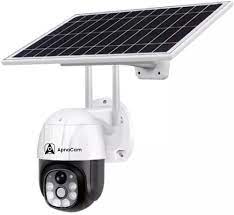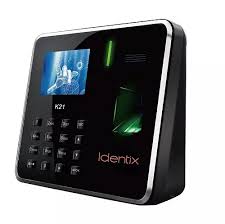Card Recognition Time Attendance: Streamlining Workforce Management
In today’s fast-paced business environment, efficient and accurate attendance tracking is crucial for effective workforce management. Traditional manual methods of recording attendance can be time-consuming, prone to errors, and lack the necessary security measures. This is where card recognition time attendance systems come into play.
Card recognition time attendance systems utilize advanced technology to automate the process of recording employee attendance. Instead of relying on manual entry or paper-based systems, employees simply need to swipe their identification cards or badges through a card reader to register their presence.
One of the key benefits of card recognition time attendance systems is their ability to streamline and simplify the entire attendance tracking process. With a quick swipe of a card, employees can accurately record their arrival and departure times, eliminating the need for manual data entry or sign-in sheets. This not only saves valuable time but also reduces the risk of errors associated with manual recording.
Furthermore, card recognition time attendance systems offer enhanced security features that help prevent unauthorized access. Each employee is assigned a unique identification card or badge that must be presented for attendance registration. This ensures that only authorized personnel can enter the premises and record their attendance, enhancing overall security within the organization.
Additionally, these systems provide real-time visibility into employee attendance data. Managers and HR personnel can access comprehensive reports that detail individual employee attendance records, including late arrivals, early departures, and absences. This information allows for better workforce planning and enables prompt action to address any attendance-related issues.
Another advantage of card recognition time attendance systems is their scalability. Whether an organization has a few employees or thousands, these systems can easily accommodate varying workforce sizes. The software associated with these systems allows for easy configuration and customization based on specific organizational requirements.
Moreover, card recognition time attendance systems are often integrated with payroll software, simplifying payroll processing by automatically calculating work hours based on recorded attendance data. This integration eliminates manual calculations and reduces the chances of errors, ensuring accurate and timely salary disbursement.
In conclusion, card recognition time attendance systems offer numerous benefits for effective workforce management. By automating attendance tracking, these systems save time, reduce errors, enhance security, and provide valuable data for better decision-making. Whether it’s a small business or a large enterprise, implementing a card recognition time attendance system can significantly improve efficiency and productivity while streamlining administrative processes.
5 Essential Tips for Choosing and Managing Card Recognition Time Attendance Systems
- Research different types of card recognition time attendance systems to find the best one for your needs.
- Ensure that the system you purchase is compatible with your existing software and hardware.
- Make sure the system is secure and reliable, with backup in case of technical issues or power outages.
- Train staff on how to use the system correctly and keep them up-to-date with any new features or changes in policy.
- Monitor usage regularly to ensure accuracy and compliance with regulations or policies governing employees’ work hours and overtime pay eligibility
Research different types of card recognition time attendance systems to find the best one for your needs.
When it comes to implementing a card recognition time attendance system, it is essential to conduct thorough research to find the best solution that suits your organization’s needs. With various types of systems available in the market, taking the time to evaluate and compare them can greatly impact the success and effectiveness of your workforce management.
The first step in researching different types of card recognition time attendance systems is to clearly define your requirements. Consider factors such as the size of your organization, the number of employees, and any specific features or functionalities you may need. Identifying these requirements will help you narrow down the options and focus on finding a system that aligns with your unique needs.
Next, explore different vendors and manufacturers that offer card recognition time attendance systems. Look for reputable companies with a track record of delivering reliable and high-quality solutions. Read customer reviews and testimonials to gain insights into their product performance, customer support, and overall satisfaction.
During your research, pay attention to the key features offered by each system. Some systems may offer additional functionalities such as biometric authentication (fingerprint or facial recognition), integration with access control systems, or mobile app compatibility. Assess these features based on their relevance to your organization’s operations and security requirements.
Additionally, consider factors like ease of use, installation process, scalability options, and maintenance requirements. A user-friendly interface and straightforward installation process can save valuable time during implementation. Scalability is crucial if you anticipate future growth or expansion in your organization. And a system that requires minimal maintenance will ensure smooth operation without causing disruptions.
Furthermore, don’t forget to compare pricing models and associated costs for each system you are considering. Look beyond just the initial investment and consider long-term expenses like licensing fees, software updates, technical support charges, and any additional hardware requirements.
Lastly, reach out to vendors for product demonstrations or request trial versions if available. This hands-on experience will give you a better understanding of how each system functions and whether it meets your expectations.
By investing time in researching different types of card recognition time attendance systems, you can make an informed decision that aligns with your organization’s needs. Remember, finding the best system is not just about its features and functionalities but also its compatibility, reliability, and long-term support. Choose wisely, and you’ll have a robust solution that optimizes your workforce management processes.
Ensure that the system you purchase is compatible with your existing software and hardware.
When considering implementing a card recognition time attendance system, one crucial tip to keep in mind is to ensure compatibility with your existing software and hardware. This step is essential to ensure a seamless integration and maximize the benefits of the system.
Before making a purchase, carefully assess your organization’s current software and hardware infrastructure. Identify the key systems and applications that are critical for your daily operations, such as payroll software or access control systems. It is important to choose a card recognition time attendance system that can seamlessly integrate with these existing systems.
Compatibility ensures that data from the attendance system can be easily transferred and synchronized with other relevant software platforms. This enables efficient data management and reduces the need for manual data entry or duplicate record-keeping.
Additionally, verifying compatibility with existing hardware is equally important. Check if the card recognition time attendance system requires any specific hardware components, such as card readers or biometric scanners. Ensure that these devices are compatible with your current infrastructure or consider necessary upgrades if required.
By selecting a system that aligns seamlessly with your existing software and hardware, you can avoid potential technical issues or compatibility conflicts down the line. This not only saves time but also eliminates additional costs associated with replacing incompatible systems or investing in new equipment.
Moreover, compatibility ensures a smoother implementation process. It minimizes disruptions to daily operations during the transition phase and allows employees to adapt quickly without significant changes to their routine.
To ensure compatibility, consult with reputable vendors or manufacturers who specialize in card recognition time attendance systems. They can provide valuable guidance and support in choosing a system that integrates well with your existing technology stack.
In conclusion, when investing in a card recognition time attendance system, prioritize compatibility with your organization’s current software and hardware infrastructure. This proactive approach will help you leverage the full potential of the system while minimizing any potential technical challenges during implementation.
Make sure the system is secure and reliable, with backup in case of technical issues or power outages.
When implementing a card recognition time attendance system, one crucial tip to keep in mind is to ensure that the system is secure and reliable. This means investing in a solution that not only accurately records employee attendance but also prioritizes data security and system stability.
To begin with, it is essential to choose a reputable provider or vendor that specializes in card recognition time attendance systems. Look for providers who have a proven track record of delivering secure and reliable solutions. Read reviews, seek recommendations, and evaluate their customer support services.
Ensure that the system offers robust security features to protect sensitive employee data. Look for encryption protocols, access controls, and user authentication mechanisms. This will help safeguard the attendance records from unauthorized access or tampering.
Another critical aspect is to have a backup plan in place for technical issues or power outages. No system is immune to occasional glitches or unexpected disruptions. Therefore, it is crucial to invest in a system that has built-in backup capabilities. This could include features like battery backups or alternative power sources to ensure uninterrupted operation during power outages.
Additionally, consider implementing redundant systems or cloud-based solutions that automatically back up attendance data in real-time. This way, even if there are technical issues with the primary system, the attendance records remain secure and accessible.
Regular maintenance and updates are also essential for maintaining the reliability of the system. Stay up-to-date with software upgrades provided by the vendor to ensure optimal performance and address any potential vulnerabilities.
By prioritizing security and reliability while selecting and maintaining your card recognition time attendance system, you can minimize risks associated with data breaches or downtime. A secure and reliable system will provide peace of mind for both employees and management while ensuring accurate attendance tracking even during unexpected situations.
Train staff on how to use the system correctly and keep them up-to-date with any new features or changes in policy.
Train Your Staff for Effective Card Recognition Time Attendance
Implementing a card recognition time attendance system can revolutionize your organization’s workforce management. However, it is essential to train your staff on how to use the system correctly and keep them updated with any new features or changes in policy. This article highlights the importance of training and keeping employees informed about the system.
Efficient System Usage:
Proper training ensures that employees understand how to use the card recognition time attendance system effectively. Train them on how to swipe their identification cards or badges correctly, ensuring accurate registration of their attendance. Emphasize the importance of swiping in and out at the designated terminals and clarify any doubts they may have regarding the process.
Familiarity with System Features:
Regular training sessions will help your staff become familiar with all the features of the card recognition time attendance system. Educate them about functionalities such as requesting leave, checking attendance records, or updating personal information through the system interface. This knowledge empowers employees to utilize the system to its full potential, enhancing overall efficiency.
Policy Updates:
Keep your staff informed about any changes in attendance policies or procedures related to the card recognition time attendance system. Conduct regular sessions to communicate updates, ensuring that everyone understands and complies with new policies promptly. This proactive approach minimizes confusion and ensures smooth implementation of any policy changes.
Troubleshooting Guidance:
Provide comprehensive guidance on troubleshooting common issues that employees may encounter while using the card recognition time attendance system. Train designated personnel who can assist colleagues in resolving minor technical difficulties or answer queries related to system usage. This support network ensures a smooth workflow and prevents unnecessary disruptions.
Continuous Learning:
As technology evolves, so do card recognition time attendance systems. Stay up-to-date with any new features or updates introduced by your provider and ensure that your staff receives training on these advancements promptly. Regularly conduct refresher sessions to reinforce knowledge and address any questions or concerns that may arise.
By investing in training and keeping your staff informed, you can maximize the benefits of your card recognition time attendance system. Employees who are well-trained and up-to-date with the system will be more confident in using it correctly, leading to accurate attendance records, improved efficiency, and streamlined workforce management.
Remember, effective implementation of the card recognition time attendance system relies not only on the technology itself but also on the knowledge and understanding of your staff. So, prioritize training and communication to ensure a successful integration of this powerful tool into your organization’s daily operations.
Monitor usage regularly to ensure accuracy and compliance with regulations or policies governing employees’ work hours and overtime pay eligibility
Monitoring Usage for Accuracy and Compliance: The Importance of Regular Checks in Card Recognition Time Attendance
In the realm of workforce management, accurate tracking of employees’ work hours is not only essential for efficient operations but also crucial for compliance with regulations and policies governing overtime pay eligibility. To ensure precision and adherence to these standards, regular monitoring of card recognition time attendance systems is paramount.
Regularly checking and reviewing the usage of card recognition time attendance systems allows organizations to identify any discrepancies or irregularities promptly. By comparing recorded data against actual work schedules, managers can ensure that employees are accurately recording their attendance, including arrival times, departure times, and breaks.
Monitoring usage also plays a vital role in ensuring compliance with regulations or policies related to work hours and overtime pay eligibility. Many countries have specific laws governing maximum working hours per day or week, as well as provisions for overtime compensation. By regularly reviewing attendance records, organizations can verify that employees are not exceeding these limits without proper authorization or compensation.
Additionally, monitoring usage helps identify any potential issues with the card recognition time attendance system itself. Technical glitches or malfunctions can occur from time to time, leading to inaccurate data recording. Regular checks allow organizations to detect such issues early on and take necessary steps to rectify them promptly.
To effectively monitor usage, organizations should establish a structured process. This may involve assigning dedicated personnel or a team responsible for regularly reviewing attendance records and comparing them against work schedules. Any discrepancies or anomalies should be investigated promptly to ensure accuracy and resolve any potential compliance issues.
Furthermore, it is essential to communicate the importance of accurate attendance recording to employees. Clear guidelines should be provided on how to use the card recognition time attendance system correctly. Regular training sessions or reminders can help reinforce the significance of adhering to established procedures.
In conclusion, monitoring the usage of card recognition time attendance systems on a regular basis is crucial for ensuring accuracy in recording employee work hours and complying with regulations or policies governing overtime pay eligibility. By conducting regular checks, organizations can identify and address any discrepancies, technical issues, or compliance concerns promptly. This not only helps maintain accurate records but also fosters a transparent and compliant work environment.



